Icelandic company breaking ground on geothermal aquaculture facility

The knock on land-based, indoor fish farming, particularly for Atlantic salmon, has mostly been a matter of economics. Environmentalists love the idea, but investors wonder if commercial-scale production can be cost-efficient enough to compete with traditional means of producing this in-demand fish. Is the return on such a significant investment sufficient to commit taking the fish out of ocean net pens and putting them in tanks?
Despite the loud “no” that often follows the question of whether the production method commonly known as RAS (recirculating aquaculture systems) can succeed at scale, there are many outfits giving it a go. Some successful endeavors have also been rewarded by influential assessors: The Monterey Bay Aquarium’s influential Seafood Watch program has given a green, or best choice, rating to terra firma recirculating aquaculture systems producing Atlantic salmon in Canada, the United States and Denmark.
One ambitious company in Iceland is trying to prove remaining industry skeptics wrong, but with one important ally in its corner — the Earth itself. By tapping into the rich geothermal energy resources in southern Iceland, Matorka aims to prove that cutting-edge technology, persistence and a prime location make land-based finfish aquaculture viable.
Construction of the world’s largest land-based salmonid farm is about to commence in Grindavik, Iceland, said Árni Páll Einarsson, CEO of Matorka Holdings AG, a company that has been producing small quantities of fish for four years, selling mainly to European buyers. All licenses are in hand, and the company has finalized a tender process for the construction, which is expected to begin as early as March, once funding is finalized.
Keeping temperature optimal year-round at an economic and sustainable rate is basically the alpha and omega of fish farming. Our new farm will do exactly that and will be producing a fish in high demand worldwide.
As Matorka breaks ground on the partial recirculating multi-species aquaculture station in Grindavik — just a half-hour drive from the capital city of Reykjavik and 20 minutes from Iceland’s main international airport, Keflavik, its annual production is expected to grow from 50 metric tons (MT) to more than 3,000 MT; its current facility will become the hatchery for the farm.
“What we say here, sometimes, is we’re making history,” Einarsson told the Advocate. “Not to beat our own chests, but internally, that’s how we view what we’re doing. We are building the biggest land-based salmonid farm in the world and using the unique resources we have at our disposal.”
Those resources start with the land. Matorka is capitalizing on a geophysical phenomenon unique to Iceland, said Brian Vinci, director of engineering services at The Conservation Fund Freshwater Institute in Shepherdstown, W.V., who has consulted on the design of the facilities.
“It’s the groundwater supply. It’s very readily available and quite large. The island is primarily a lava field; it’s quite porous. When it rains it all goes into the ground. There’s no runoff,” he said, adding that the water is easily obtained at different salinities, ideal for the cultivation of a fish like charr.

And the geothermal heat, produced by a nearby power plant that harnesses steam from underground volcanic activity, will allow the facility to strengthen its ratio of kilowatt-hours per kilogram (kWh/kg) of fish produced, saving a significant amount of money in the process. “It’s a positive for sustainable fish production,” Vinci said.
Aside from the cost of feed, controlling water temperature is one of the main expenses for a land-based fish farm, Einarsson explains.
“Keeping temperature optimal year-round at an economic and sustainable rate is basically the alpha and omega of fish farming. Our new farm will do exactly that and will be producing a fish in high demand worldwide,” he said.
Matorka, which plans to implement Best Aquaculture Practices standards and seek certification, will be marketing its fish as a sustainable, carbon-neutral, chemical-free, antibiotic-free product that is low-impact in every way, Einarsson said. Iceland, he added, is a relatively short flight away from both the European and U.S. markets. Matorka’s fish will be ready to harvest in late summer 2017, Einarsson said.
Doing what many feel is impossible is what drives Matorka’s founders, Olav Ketilsson and Stefanía K. Karlsdóttir. They feel they will have a great impact on how the land-based fish farming industry will develop in the future.
“Keep in mind that it’s a matrix where you need a lot of good fresh water and a lot of energy,” said Einarsson. “You also need access to good logistics, services and markets. It’s difficult to do any of this with just one of these elements. You have to stack them all together.”
Follow the Advocate on Twitter @GAA_Advocate
Now that you've reached the end of the article ...
… please consider supporting GSA’s mission to advance responsible seafood practices through education, advocacy and third-party assurances. The Advocate aims to document the evolution of responsible seafood practices and share the expansive knowledge of our vast network of contributors.
By becoming a Global Seafood Alliance member, you’re ensuring that all of the pre-competitive work we do through member benefits, resources and events can continue. Individual membership costs just $50 a year.
Not a GSA member? Join us.
Author
-
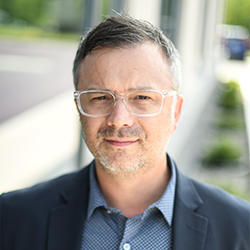
James Wright
Editorial Manager
Global Aquaculture Alliance
Portsmouth, NH, USA
Tagged With
Related Posts
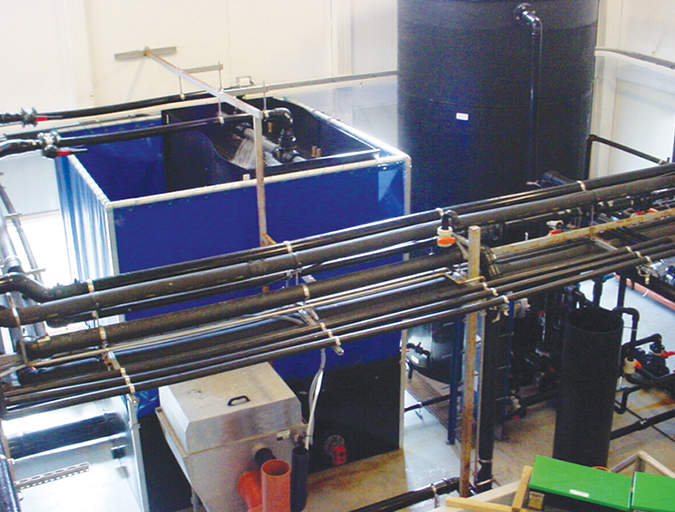
Innovation & Investment
Estimating biofilter size for RAS systems
Controlling total ammonia-nitrogen (TAN) concentrations is the primary concern when sizing a biofilter for use in a recirculating aquaculture system. Sizing decisions are best based on previous experience with a given biofilter media in a specific biofilter configuration.
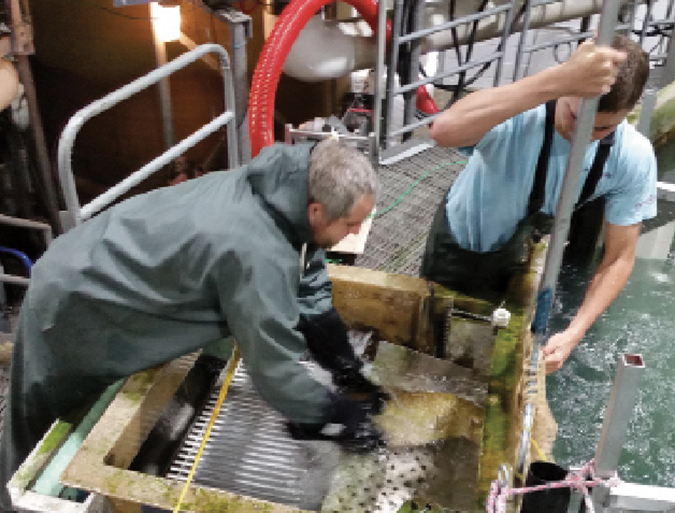
Health & Welfare
Novel air-based system transfers large salmon during harvest
To evaluate the application of an air pressure-based transport method within a recirculating aquaculture system, the authors performed testing with harvest-size salmon at The Conservation Fund Freshwater Institute.
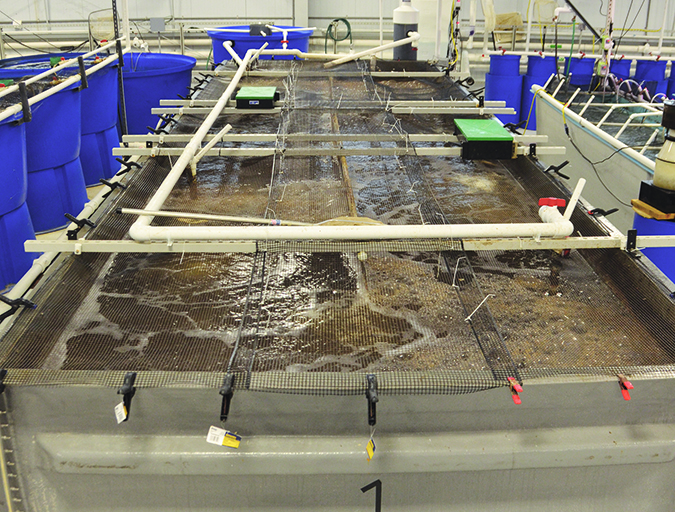
Intelligence
Indoor-raised shrimp find potential market in Kentucky test
By raising shrimp in a closed building, producers can increase biosecurity, produce shrimp more consistently, grow shrimp year-round and locate production centers near markets. Chefs and consumers were very accepting of whole fresh shrimp, offered at a farmers market, that was farmed indoors in Kentucky.
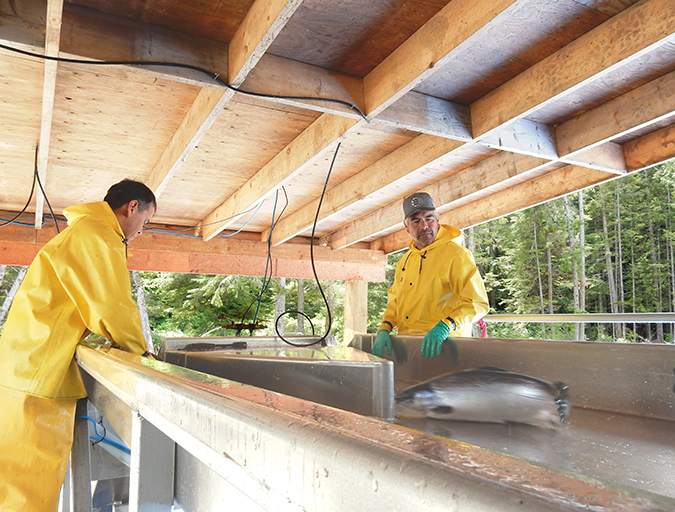
Innovation & Investment
Competitiveness comes at scale for RAS operations
Total RAS salmon production worldwide is less than half of 1 percent of total production. Many of the investors flocking to the sector now are new to fish farming, and confident in its potential.

